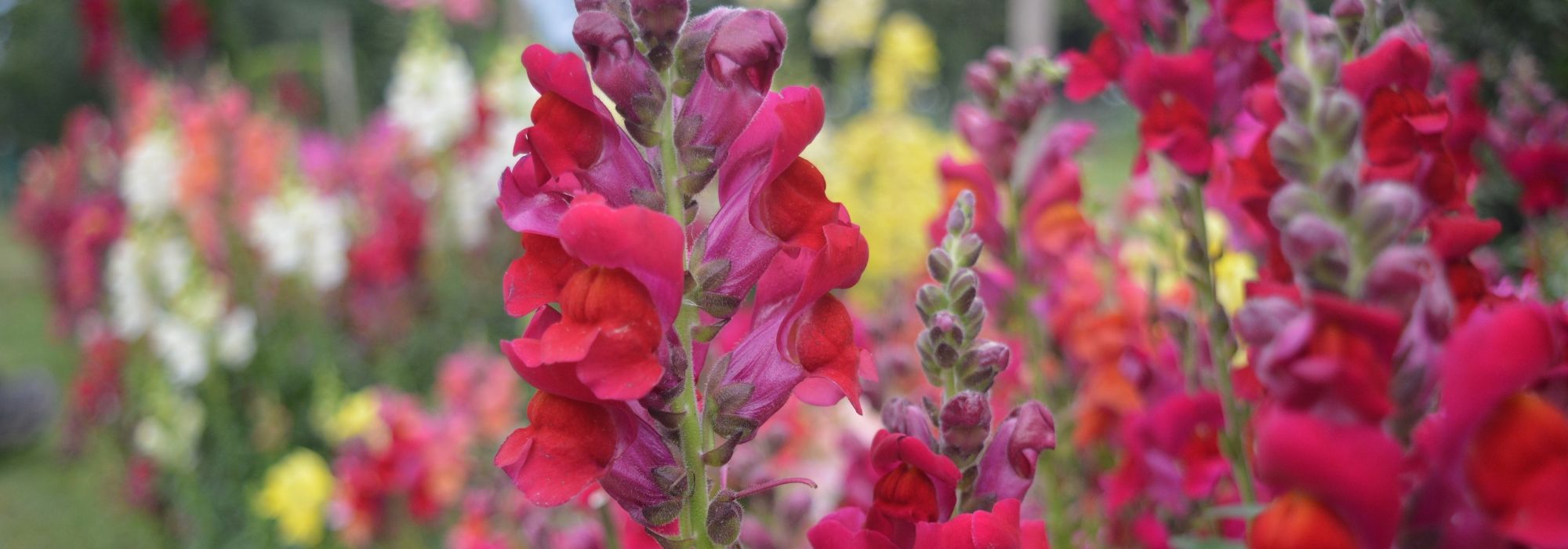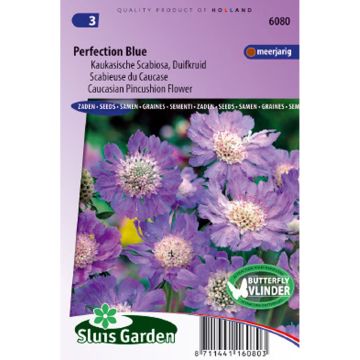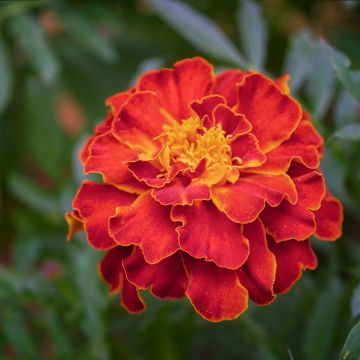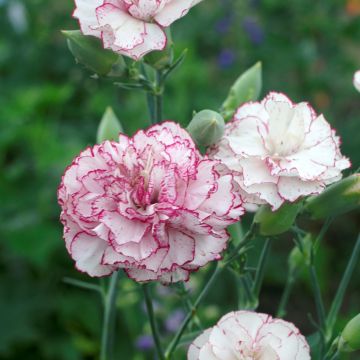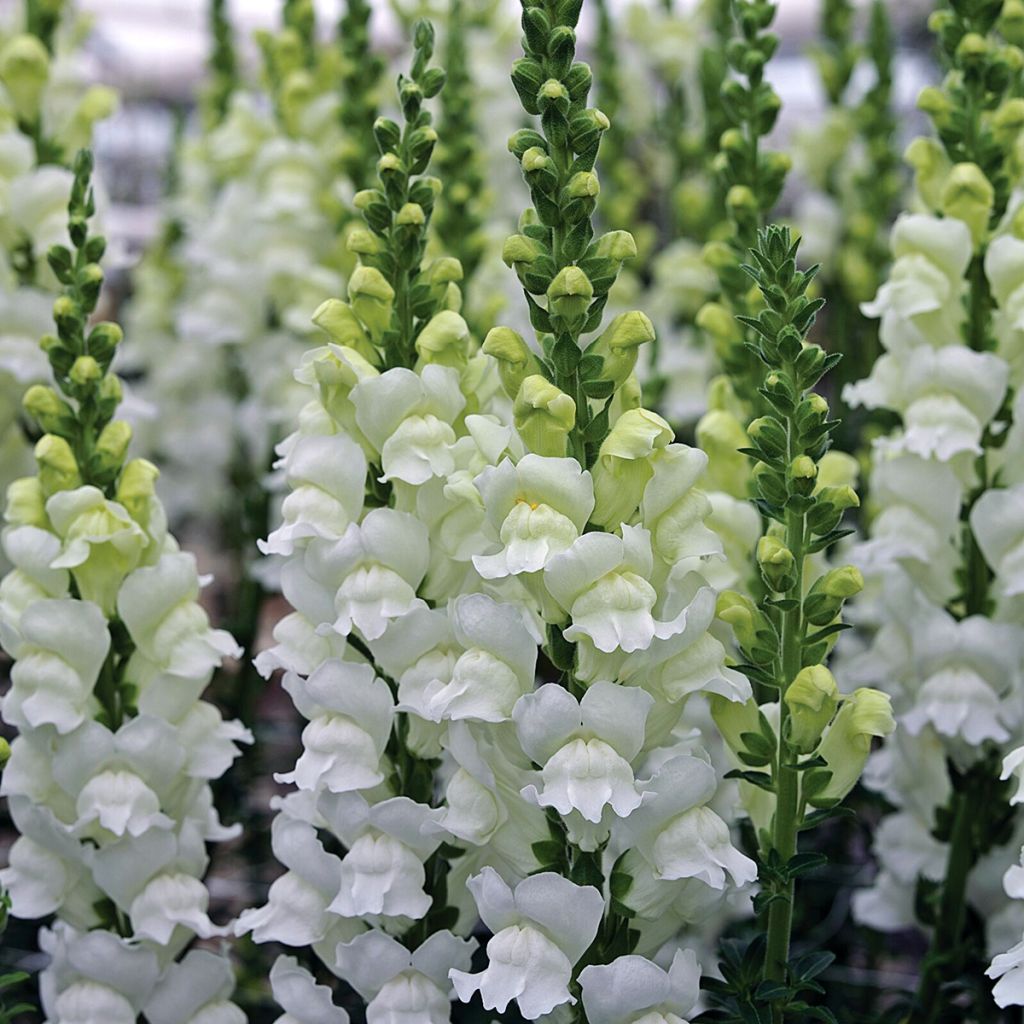

Antirrhinum x majus Fresh White - Gueule de loup, Gueule de lion, Muflier des Jardins, Muflier à grandes fleurs
Antirrhinum x majus Fresh White - Gueule de loup, Gueule de lion, Muflier des Jardins, Muflier à grandes fleurs
Antirrhinum x majus Fresh White
Gueule de loup, Gueule de lion, Muflier des Jardins, Muflier à grandes fleurs
Special offer!
Receive a €20 voucher for any order over €90 (excluding delivery costs, credit notes, and plastic-free options)!
1- Add your favorite plants to your cart.
2- Once you have reached €90, confirm your order (you can even choose the delivery date!).
3- As soon as your order is shipped, you will receive an email containing your voucher code, valid for 3 months (90 days).
Your voucher is unique and can only be used once, for any order with a minimum value of €20, excluding delivery costs.
Can be combined with other current offers, non-divisible and non-refundable.
Home or relay delivery (depending on size and destination)
Schedule delivery date,
and select date in basket
This plant carries a 6 months recovery warranty
More information
We guarantee the quality of our plants for a full growing cycle, and will replace at our expense any plant that fails to recover under normal climatic and planting conditions.
Does this plant fit my garden?
Set up your Plantfit profile →
Description
The Antirrhinum majus F1 Opus III/IV 'Fresh White', a flowering plant better known as Snapdragon, stands out for its generous flowering and decorative appeal both in the garden and in vases. This horticultural selection is part of the Opus III/IV series developed specifically for cut flower cultivation. Its long, sturdy stems adorned with brilliant white flowers bloom all summer until the first frosts, adding verticality and elegance to flower beds. Beyond its irresistible visual appeal, this annual plant also attracts pollinating insects, thus contributing to biodiversity in your garden. Its versatility mens that it can be grown both in open ground and in pots on a bright terrace. In mild climates, it may even survive from year to year, though it is generally treated as an annual.
Formerly classified in the Scrophulariaceae family, the Snapdragon now belongs to the Plantaginaceae alongside many other ornamental plants. Genera such as Linarias (Toadflaxes), Foxgloves, or Speedwells are thus highly prized for landscaping and private plots. Native to Mediterranean regions, the Antirrhinum majus, sometimes called Common Snapdragon, grows in in the limestone and arid areas of the southern Europe and is even capable of colonising old walls. It is also found elsewhere in Europe as well as in Western Asia and Northern Africa. This species appreciates bright exposures without excessive direct sun, as well as soil that is poor in organic matter but rich in mineral elements.
Thanks to the work of horticultural developers, there are varieties in professional production on the market specially dedicated to cut flowers, which also delight amateur gardeners. This is the case with the Opus III/IV range which comes in cultivars of different colours, all well suited to flower arrangement making. Sow the 'Fresh White' in spring, four to six weeks later depending on your climate; you can then plant them out and approximately 100 to 110 days after sowing, you can enjoy their immaculate flowering. The plant forms a clump of lanceolate, alternate or opposite leaves of a beautiful deep, relatively dark green which offers a remarkable contrast with the light inflorescences. This Snapdragon produces large flowering stems in the form of spikes ranging from 60 to 80 cm in height. Over a good third of their length or more, they are covered with flowers of the iconic shape that evokes a mouth opening when the petals are pressed together sideways, hence its common name. Measuring about 3 cm, the flowers have an elongated tubular, bilabiate corolla with rounded lobes, and are of a virgin whiteness. They renew themselves all summer, from early June to late September, often even until the first frosts. Besides their beauty with a quite romantic charm, they delight pollinating insects, particularly bees, thus combining utility with ornament. The flowering stems should be cut very low if harvested to create vase arrangements of striking beauty, which emit a light fragrance.
This Snapdragon 'Fresh White' lends itself to many combinations in flowerbeds: paired with Cosmos or Old Roses, it creates a rural and romantic scene. Summer flowering Scabious will be just as perfect companions. For your cut flowers, they offer a vertical and luminous structure which you can enhance by combining them with pink or red Peonies. The contrast will then be total, both in terms of colours and graphics, thus mixing vertical spikes with large cup-shaped blooms.
WARNING: thes seeds would be best sown by very experienced gardeners accustomed to sowing very fine seeds. These seeds are as fine as dust, barely visible to the naked eye.
Flowering
Foliage
Plant habit
Botanical data
Antirrhinum
x majus
Fresh White
Plantaginaceae
Gueule de loup, Gueule de lion, Muflier des Jardins, Muflier à grandes fleurs
Cultivar or hybrid
Planting and care
Sow the Antirrhinum majus F1 Opus III/IV Fresh White from March to May on the surface of a well-drained special sowing compost. Do not cover the seeds as light aids germination. Place your tray or box in a mini greenhouse or plastic bag, maintaining a temperature of 16-20°C until germination, which usually takes 7 to 14 days. Transplant the young plants when they are large enough to handle into 8 cm pots or containers. Gradually acclimatise the plants to cooler conditions for a few weeks before planting them out after all risk of frosts has past, spacing them 25 to 30 cm apart. Planting can be done 4 to 6 weeks after sowing, and flowering begins between 100 and 110 days after sowing.
Snapdragons thrive in fertile, well-drained, loose soil and in full sun. The common snapdragon is not very hardy (-6/-7°C), so it is often grown as an annual or biennial. However, it is not uncommon for snapdragons to survive several mild winters, though they then become more susceptible to rust... To try and preserve a beautiful variety, protect the plants from severe frost in winter by ensuring good soil drainage and covering the stumps with a thick layer of leaves or dry grass: they will regrow in spring and flower earlier.
Sowing period
Intended location
Planting & care advice
This item has not been reviewed yet - be the first to leave a review about it.
Similar products
Haven't found what you were looking for?
Hardiness is the lowest winter temperature a plant can endure without suffering serious damage or even dying. However, hardiness is affected by location (a sheltered area, such as a patio), protection (winter cover) and soil type (hardiness is improved by well-drained soil).

Photo Sharing Terms & Conditions
In order to encourage gardeners to interact and share their experiences, Promesse de fleurs offers various media enabling content to be uploaded onto its Site - in particular via the ‘Photo sharing’ module.
The User agrees to refrain from:
- Posting any content that is illegal, prejudicial, insulting, racist, inciteful to hatred, revisionist, contrary to public decency, that infringes on privacy or on the privacy rights of third parties, in particular the publicity rights of persons and goods, intellectual property rights, or the right to privacy.
- Submitting content on behalf of a third party;
- Impersonate the identity of a third party and/or publish any personal information about a third party;
In general, the User undertakes to refrain from any unethical behaviour.
All Content (in particular text, comments, files, images, photos, videos, creative works, etc.), which may be subject to property or intellectual property rights, image or other private rights, shall remain the property of the User, subject to the limited rights granted by the terms of the licence granted by Promesse de fleurs as stated below. Users are at liberty to publish or not to publish such Content on the Site, notably via the ‘Photo Sharing’ facility, and accept that this Content shall be made public and freely accessible, notably on the Internet.
Users further acknowledge, undertake to have ,and guarantee that they hold all necessary rights and permissions to publish such material on the Site, in particular with regard to the legislation in force pertaining to any privacy, property, intellectual property, image, or contractual rights, or rights of any other nature. By publishing such Content on the Site, Users acknowledge accepting full liability as publishers of the Content within the meaning of the law, and grant Promesse de fleurs, free of charge, an inclusive, worldwide licence for the said Content for the entire duration of its publication, including all reproduction, representation, up/downloading, displaying, performing, transmission, and storage rights.
Users also grant permission for their name to be linked to the Content and accept that this link may not always be made available.
By engaging in posting material, Users consent to their Content becoming automatically accessible on the Internet, in particular on other sites and/or blogs and/or web pages of the Promesse de fleurs site, including in particular social pages and the Promesse de fleurs catalogue.
Users may secure the removal of entrusted content free of charge by issuing a simple request via our contact form.
The flowering period indicated on our website applies to countries and regions located in USDA zone 8 (France, the United Kingdom, Ireland, the Netherlands, etc.)
It will vary according to where you live:
- In zones 9 to 10 (Italy, Spain, Greece, etc.), flowering will occur about 2 to 4 weeks earlier.
- In zones 6 to 7 (Germany, Poland, Slovenia, and lower mountainous regions), flowering will be delayed by 2 to 3 weeks.
- In zone 5 (Central Europe, Scandinavia), blooming will be delayed by 3 to 5 weeks.
In temperate climates, pruning of spring-flowering shrubs (forsythia, spireas, etc.) should be done just after flowering.
Pruning of summer-flowering shrubs (Indian Lilac, Perovskia, etc.) can be done in winter or spring.
In cold regions as well as with frost-sensitive plants, avoid pruning too early when severe frosts may still occur.
The planting period indicated on our website applies to countries and regions located in USDA zone 8 (France, United Kingdom, Ireland, Netherlands).
It will vary according to where you live:
- In Mediterranean zones (Marseille, Madrid, Milan, etc.), autumn and winter are the best planting periods.
- In continental zones (Strasbourg, Munich, Vienna, etc.), delay planting by 2 to 3 weeks in spring and bring it forward by 2 to 4 weeks in autumn.
- In mountainous regions (the Alps, Pyrenees, Carpathians, etc.), it is best to plant in late spring (May-June) or late summer (August-September).
The harvesting period indicated on our website applies to countries and regions in USDA zone 8 (France, England, Ireland, the Netherlands).
In colder areas (Scandinavia, Poland, Austria...) fruit and vegetable harvests are likely to be delayed by 3-4 weeks.
In warmer areas (Italy, Spain, Greece, etc.), harvesting will probably take place earlier, depending on weather conditions.
The sowing periods indicated on our website apply to countries and regions within USDA Zone 8 (France, UK, Ireland, Netherlands).
In colder areas (Scandinavia, Poland, Austria...), delay any outdoor sowing by 3-4 weeks, or sow under glass.
In warmer climes (Italy, Spain, Greece, etc.), bring outdoor sowing forward by a few weeks.


































